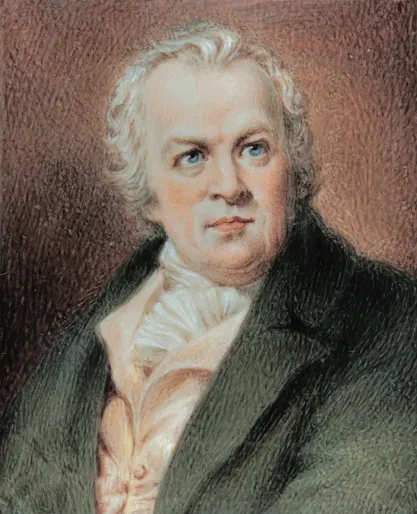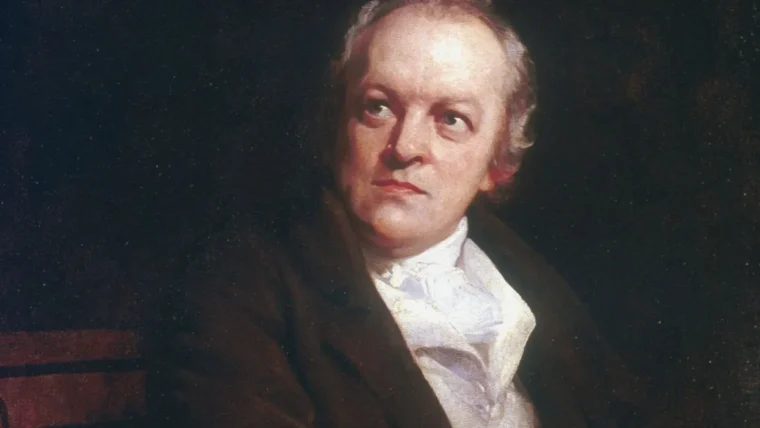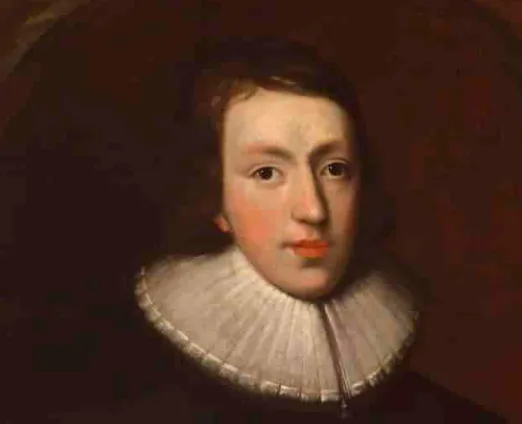Education and Artistic Development
My journey in education and artistic development began in the humble setting of my childhood home. Growing up, the emphasis on creativity and self-expression shaped the foundation of my artistic development.
My parents, recognizing my passion for the arts at a young age, nurtured my interests by encouraging me to explore various artistic mediums and techniques. Through experimental play and artistic exercises, I discovered my unique artistic voice, paving the way for a lifelong pursuit of creativity.
As my education progressed, I sought formal instruction to refine my artistic skills. Enrolling in art schools and attending workshops provided me with invaluable opportunities to learn from experienced artists and mentors. Immersed in an environment where artistic expression was celebrated,
I absorbed the techniques and theories that would inform and shape my artistic practice. The guidance and feedback from my teachers refined my technical abilities, while also fostering a deeper understanding of the historical and cultural contexts of art.
Through the combination of self-guided exploration and structured education, my artistic development continued to flourish, laying the groundwork for a fulfilling career in the arts.
Influence of Religion and Spirituality
One of the most notable aspects of William Blake’s artistic development is the strong influence of religion and spirituality on his works. Raised in a devout Christian household, Blake’s early exposure to biblical stories and teachings greatly shaped his understanding of the world and his artistic expression.
Throughout his career, he constantly sought to explore and convey profound spiritual truths through his paintings, poetry, and illuminated books. His deep sense of divine inspiration is evident in the recurring themes of angels, demons, and biblical imagery that permeate his works.
Blake’s religious beliefs were deeply personal and often diverged from traditional Christian interpretations, as he sought to challenge established dogmas and embrace a more mystical and visionary understanding of spirituality.
In his poetry and literary works, Blake consistently grapples with complex spiritual concepts, delving into themes of the soul’s journey, the nature of God, and the tensions between good and evil. His engagement with religion is characterized by a deep sense of spirituality that transcends institutionalized practices and seeks to connect individuals directly with the divine.
For Blake, religion was not just a system of beliefs; it was a transformative force that had the power to awaken the innermost truths of the human soul. His writings often blend Christian symbolism with elements of mythology, folklore, and mysticism, creating a uniquely layered and profound exploration of the spiritual realm. In this way, Blake’s work stands as a testament to the enduring power and significance of religion and spirituality in the human experience.
Relationships and Personal Life
William Blake’s relationships and personal life played a significant role in shaping his artistic journey. One of the most influential individuals in Blake’s life was his wife, Catherine Boucher. They shared a deep bond, and she became a vital supporter of his artistic endeavors.
Catherine’s unwavering belief in Blake’s talent and her unwavering support provided him with the emotional stability and encouragement he needed to pursue his creative vision. Their partnership was not just limited to personal life, as Catherine also actively assisted Blake in the publication of his works, contributing to the creation of their illuminated books. This synergy between them allowed Blake to fully immerse himself in his artistic pursuits, resulting in some of his most profound and captivating pieces.
Another significant relationship in Blake’s life was with his closest friend and fellow artist, John Flaxman. They shared a deep mutual respect and admiration for each other’s work, which fueled their artistic growth. Their friendship provided a platform for intense intellectual discussions, challenging and expanding their creative perspectives.
Together, they explored various artistic techniques, experimenting with different mediums and styles. This collaborative relationship allowed Blake and Flaxman to support and motivate each other, creating an environment conducive to artistic exploration and development. Through these close connections and personal relationships, Blake found solace, inspiration, and the foundation to further explore his artistic vision.
Blake’s Views on Society and Politics
Blake had strong and fervent views on society and politics that were deeply rooted in his own experiences and observations. His works often reflected his deep concern for the oppressive systems and institutions that he believed stifled individual freedom and creativity. Through his poetry, art, and writings, Blake aimed to challenge and critique the social and political structures of his time, seeking to expose the injustices and inequalities that he observed.
One of the central themes in Blake’s views on society and politics was his criticism of the industrialization and modernity that was rapidly transforming London and society as a whole. He believed that this rapid urbanization and mechanization were dehumanizing and enslaving individuals, stifling their natural creativity and spiritual essence.
Blake saw the machine-like nature of the industrialized world as a direct contrast to the inherent divine nature of human beings. His works often depicted the negative consequences of these societal changes, emphasizing the loss of innocence, the corruption of human values, and the suppression of individual potential.
The Creation of Illuminated Printing
The creation of illuminated printing marked a significant turning point in William Blake’s artistic career. This innovative technique allowed him to combine his skills as both a poet and an engraver, resulting in visually stunning works of art. Instead of simply printing text onto paper, Blake adopted a labor-intensive process wherein he meticulously hand-engraved both the text and accompanying illustrations onto copper plates.
These plates were then inked and pressed onto the paper, producing a beautiful integration of word and image. This groundbreaking method not only showcased Blake’s technical prowess, but also allowed him to achieve a level of artistic expression previously unseen in the world of printmaking.
Blake’s choice to employ illuminated printing was motivated by his desire for creative autonomy. By taking control of the entire printing process, he liberated himself from the restrictions imposed by conventional printshops. This newfound freedom allowed him to infuse his works with a unique aesthetic vision, resulting in a body of work that is both visually captivating and deeply meaningful.
Through illuminated printing, Blake was able to create stunning visual representations of his poetic ideas, merging the written word with symbolic imagery in a way that transcended the boundaries of traditional printing methods. This revolutionary approach to printmaking not only defined Blake’s career, but also paved the way for future artists to explore the limitless possibilities of combining text and image.
Blake’s Poetry and Literary Works
With an impressive body of work spanning over four decades, William Blake’s poetry and literary works have left an indelible mark on the world of literature. His poetic style is characterized by a unique blend of lyrical beauty and visionary imagination, often exploring themes of spirituality, social injustice, and the complexities of the human condition.
Blake’s poems showcase his remarkable ability to seamlessly weave together rich symbolism, vivid imagery, and thought-provoking allegory. Whether it is the evocative simplicity of “The Lamb” or the dark intensity of “The Tyger,” Blake’s poems captivate readers with their emotional depth and philosophical insights.
His literary works not only demonstrate his extraordinary talent as a poet but also offer a profound and timeless commentary on the complexities of existence.
While Blake is celebrated for his poetry, his literary contributions extend far beyond his verses. His prose writings, such as “The Marriage of Heaven and Hell” and “The Four Zoas,” provide a deeper understanding of his views on society, religion, and the nature of creativity.
Blake’s prose is characterized by its visionary and often enigmatic nature, challenging conventional beliefs and inviting readers to question established norms. His unique writing style, marked by a fusion of poetic language and philosophical musings, has influenced countless artists and thinkers throughout the centuries.
Blake’s literary works continue to inspire readers and serve as a testament to his enduring legacy as one of the most influential figures in English literature.
Exploring Blake’s Mythology and Symbolism
Within the pages of William Blake’s works, we encounter an intricate tapestry of mythology and symbolism that permeates his artistic vision. These elements serve as a powerful vehicle for expressing his deep understanding of the human condition and the larger metaphysical realm.
Blake’s mythology often draws inspiration from ancient texts and religious beliefs, interwoven with his own visionary interpretations. Through his intricate symbolism, he invites the reader on a journey to explore the depths of the human psyche, unveiling layers of meaning and prompting introspection.
Whether it be the complex symbolism of the lamb and the tiger in “Songs of Innocence and Experience” or the profound mythological narratives found in “The Book of Urizen,” Blake transports us to a timeless realm where the eternal truths and existential questions of humanity unfold.
One of the defining features of Blake’s mythology and symbolism is his ability to seamlessly merge the spiritual with the material world. Influenced by his religious upbringing and his own mystical beliefs, Blake creates a rich tapestry where the divine and earthly realms intermingle.
His art becomes a language of interpretation, forging connections between the physical and metaphysical, the visible and invisible. Whether it is the personification of abstract concepts like Urizen and Los, or the complex allegorical figures that populate his illuminated books, Blake navigates the landscapes of symbolism and mythology with finesse.
Through intricate visual imagery and symbolic motifs, he imbues his works with both spiritual wisdom and a profound critique of the human condition. In delving into Blake’s mythology and symbolism, we uncover an artist who, through his imagination, evokes a heightened awareness of the infinite possibilities of existence.
Blake’s Influence on Romanticism
As an expert autobiographer, it is impossible for me to overlook the profound influence that William Blake had on the Romantic movement. Blake’s unique artistic style, his exploration of the imagination, and his emphasis on individuality and emotion became defining characteristics of Romanticism. His visionary poetry and intricate illustrations challenged traditional artistic conventions and paved the way for a new era of creative expression.
In both his visual and literary works, Blake rejected the rigid norms of his time and embraced a more experimental approach. He believed in the power of the imagination and saw it as a means to transcend the limitations of the physical world.
This revolutionary idea resonated deeply with the Romantic poets and artists who sought to break free from the constraints of reason and rationality. Blake’s ability to blend the spiritual with the earthly, the mystical with the mundane, captivated the Romantics and inspired them to explore the depths of their own inner worlds.
The Reception and Legacy of Blake’s Works
William Blake, the visionary poet and artist, left behind a profound and enduring legacy with his works. His unique blend of poetry and visual art challenged traditional conventions and pushed the boundaries of creativity.
The reception of Blake’s works during his lifetime was limited, with only a small circle of admirers appreciating his revolutionary ideas. It wasn’t until after his death in 1827 that his works gained wider recognition and started to influence subsequent generations of artists and writers.
Blake’s legacy extends beyond his artistry to his profound impact on Romanticism and the broader literary and artistic movements that followed. His emphasis on imagination, spirituality, and the power of the individual resonated with later poets like Percy Shelley and John Keats, who drew inspiration from his visionary works.
Additionally, his critique of industrialization and modernity foreshadowed the social and environmental concerns that continue to be relevant today. The themes of innocence and experience that permeate his writings have become iconic motifs in literature, shaping our understanding of human nature and the complexities of the human condition.
In this way, Blake’s works continue to influence and inspire artists, writers, and thinkers, cementing his position as a visionary and an enduring figure in the annals of art and literature.
Blake’s Views on Imagination and Creativity
One of the central themes that runs through Blake’s works is his profound belief in the power of imagination and creativity. For Blake, imagination was not just a whimsical ability, but rather a vital force that had the capacity to shape and transform the world.
He saw the imagination as a divine gift, a spark of the divine within each individual, which could be cultivated and harnessed to bring about personal and societal change. Blake believed that through the power of imagination, individuals could transcend the limitations of the material world and access higher truths.
Blake’s views on creativity were closely intertwined with his thoughts on imagination. He believed that true creativity arose from a deep connection with the imagination and a willingness to tap into its limitless possibilities.
According to Blake, creativity was not limited to any specific field or discipline, but rather could be expressed in a wide range of forms, from poetry and art to music and dance. He emphasized the importance of allowing one’s creative instincts to flow freely, unencumbered by societal conventions or expectations.
Blake considered creativity to be a natural expression of the soul, a way of communing with the divine and giving voice to one’s deepest thoughts and emotions. In his view, true creativity had the power to inspire and uplift both the creator and the audience, fostering a deeper understanding and connection among individuals.
The Importance of Nature in Blake’s Works
One cannot overlook the profound significance of nature in William Blake’s works. Throughout his poetry and art, nature serves as a powerful symbol and source of inspiration.
Blake believed that every aspect of the natural world held spiritual and divine qualities, reflecting the presence of God in the universe. His deep connection to nature is evident in his vivid descriptions of landscapes, animals, and plants, which often convey a sense of awe and reverence.
From the majestic roaring lion to the delicate blooming flower, Blake’s portrayal of nature captures both its beauty and its inherent power, inviting readers and viewers to contemplate the mysteries of the natural world.
In Blake’s works, nature also plays a crucial role in exploring the themes of innocence and experience. He frequently contrasts the purity and harmony of nature with the corruption and oppression of human society.
For Blake, nature represents a realm untainted by the constraints of social norms and institutions, providing a haven for the expression of true human emotions and desires. Through his portrayal of nature, Blake subtly critiques the artificiality and materialism of his contemporary society, advocating for a return to a more harmonious and authentic way of living.
The importance of nature in Blake’s works thus extends beyond its aesthetic appeal, presenting a transformative force that holds the potential to awaken the individual to a deeper understanding of themselves and the world around them.
Blake’s Critique of Industrialization and Modernity
During his time, William Blake was deeply critical of the advancements brought about by industrialization and modernity. He saw the mechanization of society as a destructive force, both for humanity and for the natural world.
Blake believed that the industrial revolution was leading to the degradation of the human spirit, arguing that it created an environment in which people were reduced to mere cogs in a machine. Instead of valuing individual creativity and imagination, society embraced mass production and materialistic pursuits.
In Blake’s view, industrialization also had a detrimental impact on nature. He observed the exploitation of natural resources and the destruction of the environment for economic gain. Blake believed that this disregard for nature reflected a larger disconnect between humanity and the natural world. He saw nature as a sacred entity, a source of inspiration and spiritual nourishment.
However, in the face of industrial progress, he lamented the loss of this connection, warning that it would ultimately lead to the degradation and decay of both human society and the natural world.
The Themes of Innocence and Experience in Blake’s Works
In Blake’s works, the themes of innocence and experience hold a significant place. These contrasting states of being are often portrayed as parallel dimensions, highlighting the contrast between purity and corruption, and exploring the complexities of human existence.
In many of his poems and illustrations, Blake delves deep into the human condition, revealing the inherent tensions between these two states. His exploration of these themes provides valuable insights into the human psyche and offers a lens through which to view the world.
Through the contrasting themes of innocence and experience, Blake seeks to examine the nature of human perception and the consequences of societal norms and expectations. Innocence, often depicted as pure and untainted, represents a state of blissful ignorance and childlike wonder.
Conversely, experience is portrayed as a state of disillusionment and knowledge gained through the trials and tribulations of life. By juxtaposing these two states, Blake invites his readers to confront the inherent contradictions and complexities of existence, challenging prevailing ideas about morality and the human experience.
Through his evocative poetry and intricate artwork, Blake creates a vivid portrayal of the human journey through innocence and experience, leaving a lasting impact on both the literary and artistic worlds.
Blake’s Visionary and Mystical Beliefs
Throughout his life, William Blake expressed a deep sense of spirituality and embraced visionary beliefs that heavily influenced his artistic and literary works. Blake, considered by many as a prophet and mystic, believed in the power of imagination as a means to connect with the divine.
His radical views challenged traditional religious institutions and sought to awaken the spiritual consciousness of individuals. Blake’s visions and mystical experiences played a significant role in shaping his creative process, characterized by a unique fusion of art, poetry, and spirituality.
At the core of Blake’s visionary and mystical beliefs was his conviction that the material world was not separate from the spiritual realm. He believed that every aspect of existence, from the tiniest creature to the grandest cosmic force, contained a spark of divine energy.
Blake’s symbolism and mythological imagery were deeply rooted in his spiritual experiences, unveiling a complex web of interconnectedness between humanity, nature, and the divine. His mystical beliefs allowed him to perceive the hidden truths and spiritual significance beneath the surface of everyday life, often leading to profound and transformative revelations.
The Last Years and Death of William Blake
The final years of William Blake’s life were marked by a continued devotion to his artistic pursuits. Despite facing financial challenges, he remained committed to his creative vision, producing a remarkable body of work.
During this time, Blake also grappled with declining health, which further fueled his sense of urgency in completing his artistic projects. While he had achieved some recognition during his lifetime, it was during these last years that Blake’s reputation as a visionary artist began to take hold, laying the groundwork for his enduring legacy.
In August 1827, William Blake passed away at the age of 69, leaving behind a rich artistic legacy that continues to inspire and captivate audiences to this day. His death marked the end of a remarkable life dedicated to the pursuit of artistic expression and a profound exploration of the human experience.
Although Blake’s work did not receive widespread acclaim during his lifetime, his posthumous recognition as one of the most influential figures in the Romantic movement solidified his place in the annals of art history. His uniquely imaginative and complex body of work continues to resonate with audiences, offering profound insights into the human condition and serving as a testament to the enduring power of artistic vision.








